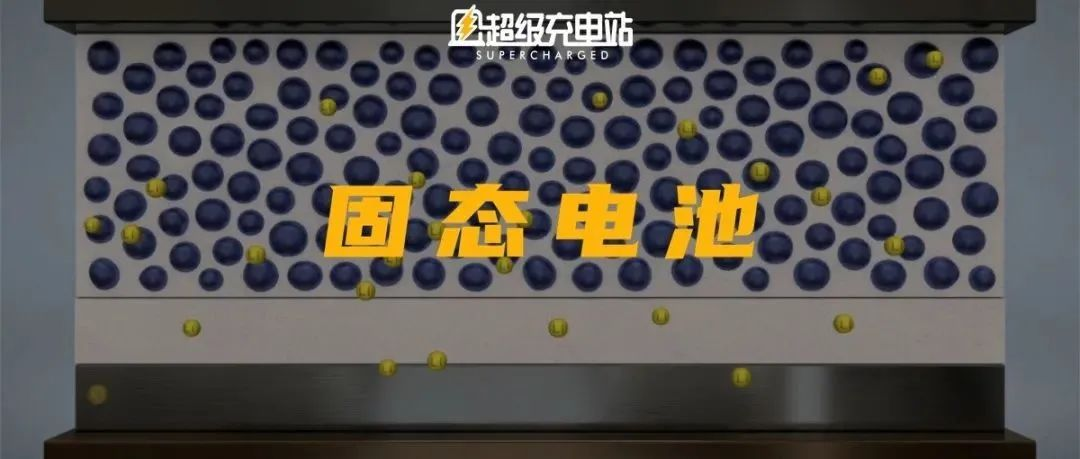“`markdown
Author: Potato Fish C
“Where should I go to charge my car?”
Last week, our editorial department brought in a national A00-level electric vehicle. The compact size and direct driving feel made all colleagues who experienced driving this car feel the joy of driving a toy car, even though it only has a range of just over 100 kilometers.
After two days of testing and experiencing this small car, the battery ran out of juice. When we planned to charge it, we realised we had overlooked an important issue due to our carelessness: there were fast charging stations all around the office area, but slow charging stations were almost extinct, and this car only supports slow charging.
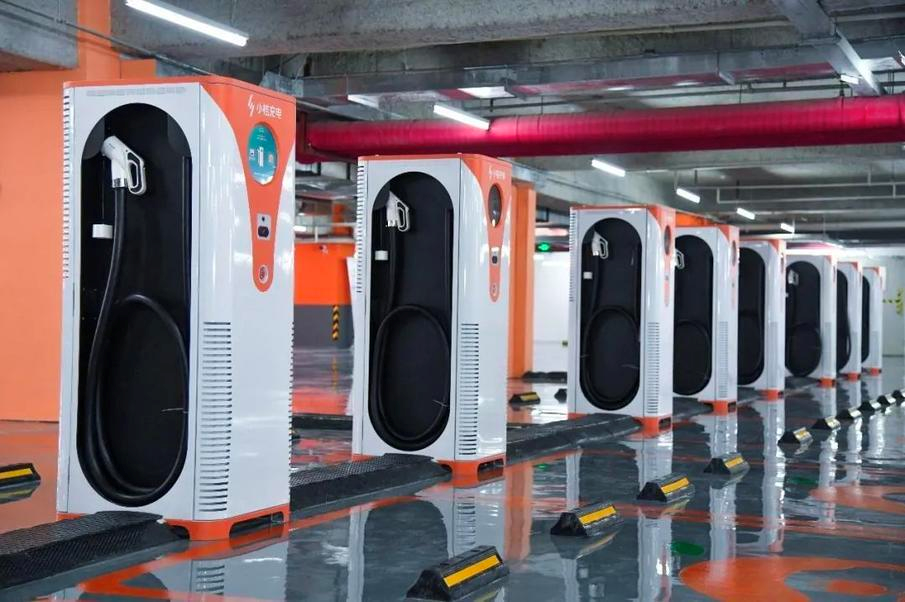
We then thought of using the onboard charging cable to charge it. But in a congested city like Beijing, finding a parking spot with a 220V grounded socket is almost a luxury.
Then, the opening sentence of this article was born out of despair.
The embarrassing charging experience made our company’s CTO, Mr. Mie, very frustrated. Originally, he was a loyal fan of this small car, “Why can’t it support fast charging?”, he exclaimed. “If it could fast charge in 5 minutes, even if the range is only just over 100 kilometers, it could still be acceptable, just like fast charging for mobile phones today.”
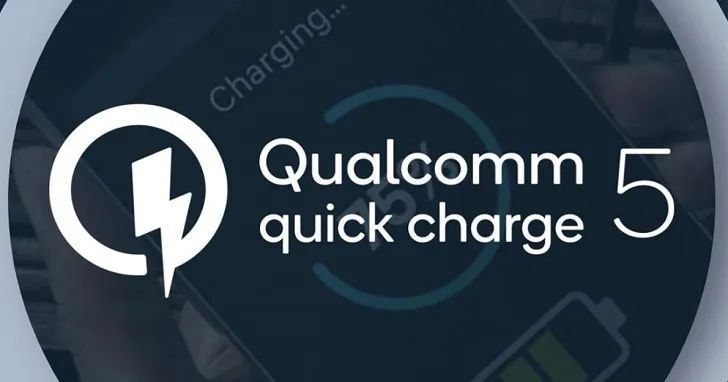
However, with current lithium battery technology and production costs, it is indeed difficult to achieve “small-capacity battery pack with high-power fast charging”. But in the past few days, Nissan held a technical seminar on all-solid-state batteries, which gives us a glimmer of hope.
The bottleneck of small battery fast charging
Speaking of this, some colleagues may disagree, “Now Tesla V3 supercharger can achieve a power of 250 kW, and even third-party charging brands have 120kW fast charging stations, which is not a rare thing.”
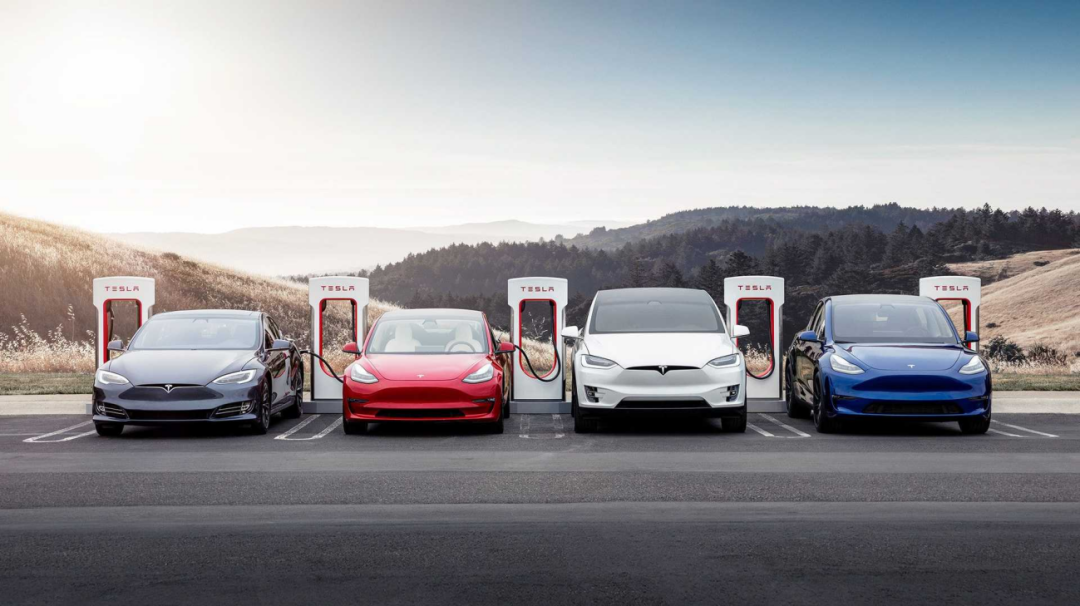
You have overlooked a big premise of this issue, “small-capacity battery” fast charging technology.
In theory, a 120kW fast charging station can charge a 15 kWh battery in just 7.5 minutes. However, in practice, even if factors such as temperature and trickle charging are removed, it is difficult to achieve this speed. To fully charge a 15 kWh battery in just 7.5 minutes, this battery must be an “8C battery”.
The “C” mentioned here refers to the charge and discharge multiple.The charge-discharge rate refers to the current required for a battery to release its rated capacity within a specified time. If a battery can complete full discharge or charging in 1 hour, we call it a 1C battery; if it can be done within 0.5 hours, it is a 2C battery, and so on.
Currently, the mainstream power battery for automobiles has a charge-discharge rate of only about 3C, which is also the bottleneck of the “fast charging technology for small-capacity batteries” mentioned earlier.
Higher charge-discharge performance is one of the characteristics of Nissan’s all-solid-state batteries, which is why I call it the “dawn.”
All-solid-state battery
Whether it is Tesla’s 2170, 4680 battery, or BYD’s blade battery, they are all composed of positive and negative electrode materials, electrolytes, and separators. Among them, the electrolyte, as the main medium for lithium ion movement, is an important part of lithium batteries.
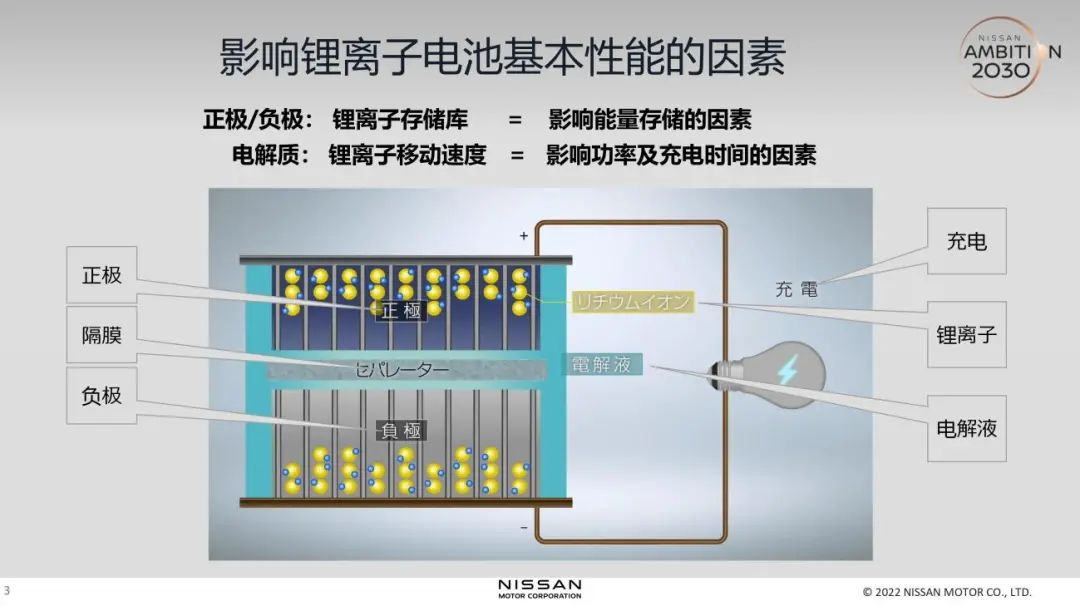
An all-solid-state battery is a rechargeable battery that uses solid materials as an electrolyte, as the name suggests.

The most direct benefit of using solid-state electrolytes is safety.
Lithium batteries generate heat during operation. In extreme cases, a large amount of heat can vaporize the liquid electrolyte, expand it, and rupture the separator, causing a short circuit between the positive and negative electrodes of the battery, which can lead to safety accidents.
The biggest advantage of the solid-state electrolyte is that its physical and chemical properties are more stable. Compared with the liquid electrolyte, the change in shape of the solid-state electrolyte can be almost neglected under the same temperature, which avoids the occurrence of the above-mentioned accidents and greatly reduces the risk of thermal runaway of lithium batteries. Therefore, the solid-state electrolyte is also considered as one of the solutions to the safety problem of power batteries.
Higher heat tolerance also means that all-solid-state batteries can achieve higher safe operating temperatures. For lithium-ion batteries, a higher operating temperature means higher lithium-ion activity, and at the macro level, we can obtain faster charging speeds. According to information released by Nissan, the target charging power for all-solid-state batteries is 350 kW.
This is not just an empty promise. It is reported that Nissan has already completed the measurement of charge-discharge performance at the level of 1000Wh/L. At 25℃, it can be charged from SOC 15% to 80% in 15 minutes.

The stable properties of solid-state electrolytes also provide more possibilities for cost reduction. This cost reduction potential is reflected in the selection of positive and negative electrode materials.The development of lithium-ion battery technology has reached a point where, due to the relatively active nature of liquid electrolytes, the options for positive and negative electrode materials are actually quite limited. This can explain why the recent surge in raw material prices, particularly for lithium carbonate, has directly led to a surge in lithium-ion battery prices, as there are no other viable options.
However, the stability of solid-state electrolytes allows for a wider range of options for positive and negative electrode materials. This means that we can try using materials that are easier to obtain, lower in cost, and offer better performance, thereby reducing the manufacturing cost of lithium-ion batteries.
Compared to the full charge voltage of 4.2V for liquid lithium-ion batteries, higher-performing positive and negative electrode materials bring full charge voltages of over 5V to all-solid-state batteries. Higher voltage means higher energy density. Currently, Tesla’s latest 4680 batteries have an energy density of 300 Wh/kg, an absolute industry leader, while the energy density of all-solid-state batteries will exceed 400 Wh/kg.
In summary, all-solid-state batteries will offer better safety, higher performance, and lower cost. I retract my previous statement about the “dawn” of this technology; this is the new “bright light” of battery technology.
Research and Development Details
During the communication meeting, Nissan also talked about some of the details of the all-solid-state battery development process.
For example, the selection of positive and negative electrode materials for the battery.
As previously mentioned, the stable nature of solid-state electrolytes allows for more options in the selection of positive and negative electrode materials for all-solid-state batteries. And this “more” accurately refers to more than 150,000 types of materials.
Too few options can be troublesome, and too many options can also lead to problems. Which one should be chosen?
Testing each one individually is clearly not the most sensible choice. Nissan sought the help of NASA, which used artificial intelligence simulation technology to simulate and test massive amounts of materials on a computer, in order to find the best combination of positive and negative electrode materials.
In fact, Nissan’s exploration of this new technology has received help not only from NASA, but also from other globally renowned institutions. It is precisely this kind of strong collaboration that provides more opportunities for the birth of new technologies.
Apart from external assistance, there is also Nissan’s own technological accumulation.
Nissan mentioned that the production of all-solid-state batteries essentially involves stacking positive electrode, solid-state electrolyte, and negative electrode. However, the simple word “stacking” implies a great deal of precision challenges.This is because the solid-state electrolyte material relies on contact with the positive and negative electrode materials to transmit lithium ions. If the contact surface between the solid-state electrolyte and the positive and negative electrode materials is not flat enough, even if there are protrusions, there will be gaps between the dielectric material and the electrode material. As a result, the efficiency of lithium ion transmission will be greatly reduced, and the heat accumulation of the protrusions will also occur locally. All of these will hinder the normal operation of the all-solid-state battery.
To solve this problem, high-precision electrode stacking technology is required.
In the past 12 years, the Nissan Leaf has maintained a record of zero major battery accidents. It is through the research and development and manufacture of the soft-pack lithium-ion batteries carried by the Leaf that Nissan has accumulated high-precision electrode stacking technology, which specifically refers to 0.0001m.
Now, Nissan has applied this technology to the production of all-solid-state batteries, effectively solving the yield problem in all-solid-state battery production.
Based on all-solid-state batteries, Nissan has proposed the “Nissan 2030 Vision”, which is longer range, shorter charging time, and lower battery cost. Isn’t this the vision of all electric vehicle users?
With the target in mind, the next step is to implement it concretely. Applying the popular “OKR”, O-Objective naturally refers to “Nissan 2030 Vision”, and the recent KR-Key Result should be the trial factory built in Yokohama, Japan in 2024. This is a critical step for Nissan’s large-scale production of all-solid-state batteries.
If everything goes smoothly, we will see Nissan’s electric vehicles equipped with all-solid-state batteries in 2028.
We all sincerely wish Nissan the best of luck and no delays, mainly because Mr. Lei’s howling is simply unbearable.
This article is a translation by ChatGPT of a Chinese report from 42HOW. If you have any questions about it, please email bd@42how.com.
